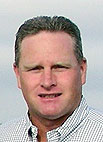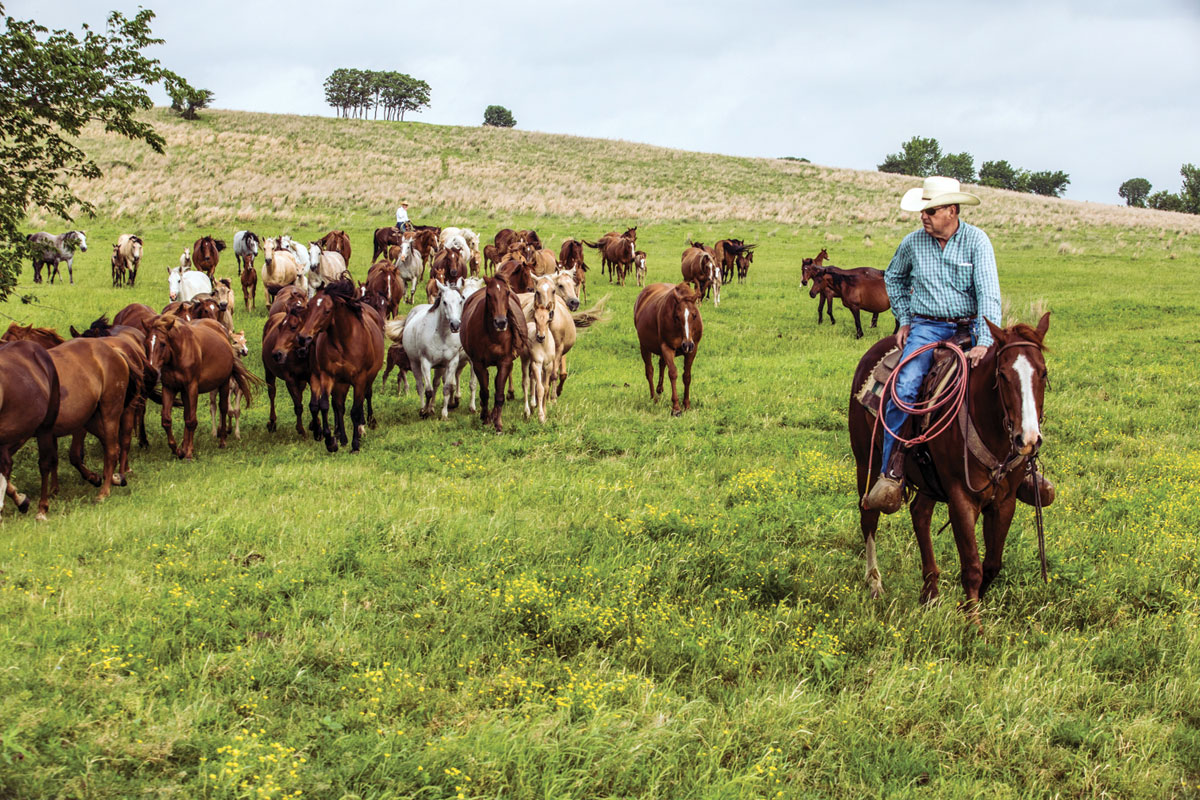
The offices of Gordon Hart’s Romart, Inc., a structural steel erection business covering nearby states, is on Route 62 in Farmington, Ark. The secret, however, is housed in the connected Quonset building behind the offices. Here is the heart of Gordon’s John Deere restoration hobby.
Gordon’s interest in the tractors started in the late 1990’s when an old man said, “I could make more money on tractors setting in the weeds than putting money in the bank.” That started Gordon thinking. Then when Gordon heard an old 2-cylinder tractor start up for the first time, the passion ignited. The deafening, rhythmic growl riveted his attention. Gordon said, “When it spit fire at me, it made the hair stand up on the back of my neck.”
Gordon was hooked, so much so that he now calls himself an accumulator rather than a collector. To prove his point, he started up a recently restored 1931 model GP, Deere’s first attempt at a row crop tractor. Gordon moved to one side and started turning the Deere-green flywheel. After a few sputters, the machine exploded into life and Gordon’s face lit up like a kid’s at Christmas.
Deere fever may not be an epidemic, but it is contagious. Part of the excitement is the hunt for tractors. Recently, Gordon bought what he believed to be a good tractor for restoration. As he was loading it for transport, he realized it didn’t have power steering, which made it a great buy because the machine was one of only 45 ever made. Gordon said, “Every once in a while even a blind hog finds an acorn.”
In a small notebook tattered and worn by use is a neatly hand-written list of all Deere tractors manufactured from 1923 to 1972 with the range of serial numbers indicating the models, years and production numbers of each. It is a one of a kind, carefully accumulated treasure that allows Gordon to make informed decisions about what to purchase. Early on he learned that restoring cost for a rare tractor is about the same as a common one. The difference is in the value when done.
Gordon feels that his preferences are shifting. In the beginning, the biggest thrill was purchasing rare tractors and restoring them to prime condition. The problem was that those tractors were museum pieces not work pieces. They needed to be kept dry and sheltered at all times.
The shift started to take hold after Gordon began going to an annual working show in Sulphur, Okla. The purpose was to give kids hands-on exposure to farming and the products it provides and enhances. Many are familiar with the wide-eyed wonder of some children when seeing or actually milking a cow, but Gordon’s favorite example has to do with a cotton demonstration at the show where the kids see some cotton seeds and then realize that cotton is a critical element in paper money because it gives the bills structure and durability. Another favorite is watching kids’ amazement as they pick corn, shell it and grind it into cornmeal they recognize as tortillas or cornbread.
School kids come to the show on Friday to participate in numerous hands-on activities. Gordon brings walking plows and a tractor that idles slowly. The kids get to walk behind the plow and plant crops like cotton, corn and peanuts. They even get more excited when they get to drive Gordon’s tractor. Gordon said, “The only reason this works is that they are nervous and scared so they really listen as I walk beside them.” Then he added, “Some kids come back year after year to drive. That’s the fun part.”
What the working show led Gordon to realize is that owning tractors was fun but actually using the loud, stocky machines was better. Consequently his attention is now including restoring tractors to original usability rather than showroom quality.
When asked what his favorite tractor was, he grinned and said, “Always the last one I bought because it is the latest one I got attached to.”







